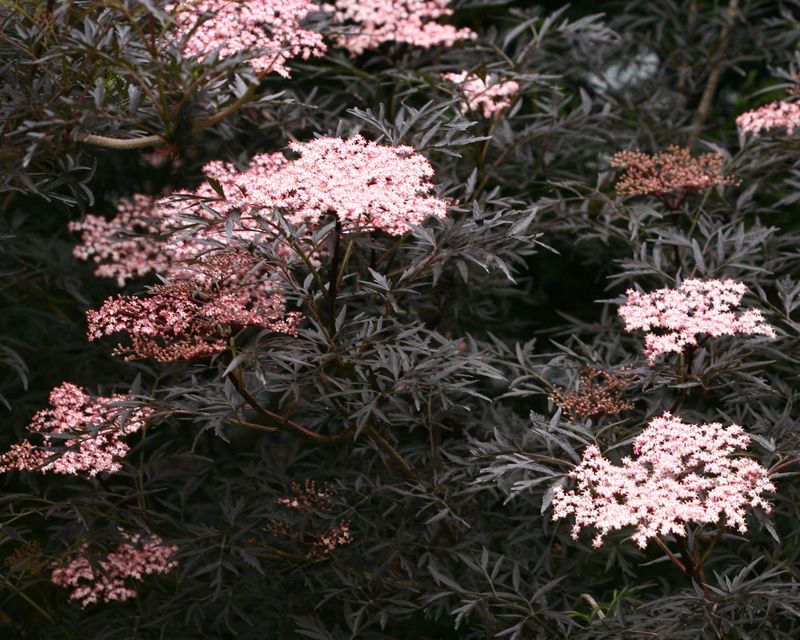Beauty with a Body Count: The haunting, dangerous, and dark side of flowers
- Ilana Williams
- Oct 23
- 4 min read
Some flowers are more than decoration. They hold a quiet power - a reminder that beauty can be dangerous. They can heal, harm, or simply exist on the edge between the two.

I’ve always been drawn to that tension. The edge where something appears gentle but carries its own warning. That’s how my logo came to feature a wolf and wolfsbane.
The Flower and the Wolf
Her name was Ash, the grey dog who inspired Grey Dog Flowers. When I began working with a branding company, nothing felt quite right. Everything was too light, too safe, too predictable, too floral.
I remember saying:
“I feel like there needs to be something edgier to the brand. Something dark and moody. Almost as easily as it could be puppies and flowers, it could also be a wild wolf and poisonous plants.”
The answer was wolfsbane.

Wolfsbane (Aconitum napellus) is tall and violet, alluring yet dangerous. Every part of the plant is toxic if ingested, capable of causing numbness, heart irregularities, and eventual convulsions and paralysis. At the same time, in homeopathic preparations, it is used to treat the early stages of colds. A plant of paradox: both poison and remedy.
In folklore, it was used to repel werewolves or, in darker tales, to create them.
“All things by poison are cursed, but nothing is without poison.” — Paracelsus, 1538
Wolfsbane embodies the duality I wanted in the logo - beautiful and commanding, but also mysterious and dangerous.
Snapdragon Skulls
Even familiar flowers can surprise. Snapdragons, when dead, reveal seed pods shaped like tiny skulls.

These pods have inspired folklore for centuries. Some believed they contained the souls of flowers, others warned they could attract spirits. Snapdragons themselves are not considered poisonous, though the skull-like pods give a reminder of mortality and the life cycle of the garden.
The Night Garden

Some plants seem to carry the night within them - petals so dark they nearly absorb light, leaves that shimmer almost black in sunlight. Many of these “gothic” blooms have histories as guardians, poisons, or remedies. Here are a few of the most notable.
Queen of the Night Tulip (Tulipa ‘Queen of Night’)
A tulip of deep plum, almost black. It is not poisonous, though its depth of color gives it a solemn presence. In Victorian flower language, tulips spoke of devotion and statements of love; the Queen of Night tulip feels like a love that lingers even after dark.
“There is a charm in the darkness, if only one can see the stars through it.” — Henry M. Field, 1890

Black Bat Flower (Tacca chantrieri)
This plant produces dark, winged bracts with long filaments. It is not considered poisonous to humans, though all parts are mildly irritating if handled roughly. Native to Southeast Asia, it is associated with mystery and the uncanny.
“Nature herself hath moods as wild and witch-like as the heart of woman.” — E. Cobham Brewer, 1870

Dark-Leaved Colocasia (Colocasia esculenta ‘Black Magic’)
Large, heart-shaped leaves of deep black-purple. All parts of colocasia are toxic if eaten raw, causing irritation and swelling; cooking neutralizes these compounds (just an aside - this is a frigging gorgeous plant and unless you're under zombie attack and can't leave your house, I can't imagine a scenario where you would want to eat it). The plant balances beauty and caution, a reminder that even ornamental plants can demand respect.

Black Lace Elderberry (Sambucus nigra ‘Black Lace’)
Leaves and stems are deep purple-black; flowers are soft pink. The berries and foliage are mildly toxic when raw, though elderberries are edible once cooked. Folklore suggests elder trees are connected to spirits, adding a quiet sense of mystery to its appearance.
“Elder be the lady tree, ancient mother of the hedge.” — English Folk Charm, 17th c.

Black Knight Scabiosa (Scabiosa atropurpurea ‘Black Knight’)
Velvet petals almost black, sometimes showing deep red highlights. This plant is not poisonous. The name “Scabiosa” comes from scabies, reflecting its historical use in healing skin ailments. A flower of quiet intensity, standing between the garden’s living and fading light.
“The fairest things are those that perish soonest.” — George Sand, 1845

Black Beauty Sunflower (Helianthus annuus ‘Black Beauty’)
Petals of deep mahogany, nearly black, edged with subtle gold. Not poisonous. A sunflower with the presence of darkness, turning toward the sun but reminding us that even light carries shadow.
“Even the sun hath its eclipse.” — John Heywood, 1546

Between Poison and Cure
Plants often live in duality: what heals can also harm. Foxglove (Digitalis) steadies the heart but is lethal in excess. Belladonna (deadly nightshade) causes confusion, delirium, and convulsions, but is used in homeopathy to treat high fevers with sweating, throbbing headaches, inflammation that is hot and red, and sore throats. Yew has been used to create breast and ovarian cancer treatments, promote menstruation, and treat parasites, but ingesting any part of the plant can cause headaches, nausea, and even cardiac arrest. Opioids from opium poppies relieve pain, but an overdose can cause death.
“The dose makes the poison.” — Paracelsus

Gardening and flower keeping demand awareness. Every bloom carries its own rules, every leaf a story. Even the most beautiful plant can remind us that beauty is not always harmless.
Shadows in the Garden

October is a reminder of that balance - vibrant life cycles through decay and death. Grey Dog Flowers exists in that space: where beauty is potent, alive, sometimes dangerous, and always honest.
It's Real. Unfiltered. Wild.





Comments